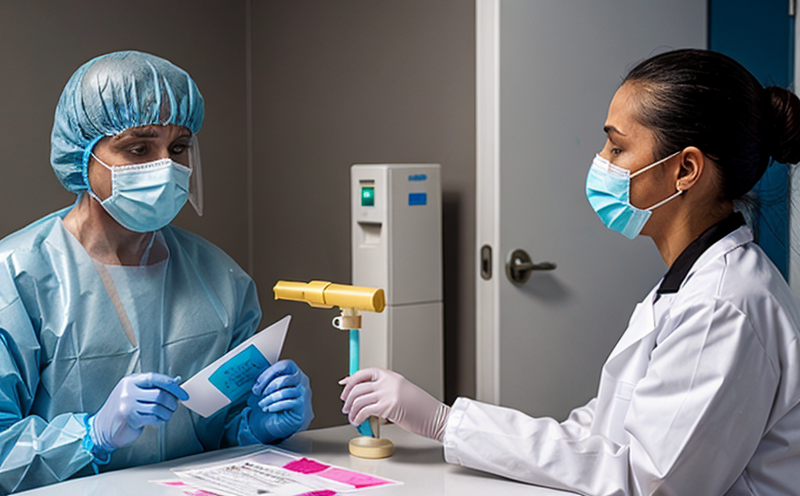Chlamydia psittaci Testing in Birds (Psittacosis)
The testing of Chlamydia psittaci in birds is crucial for diagnosing Psittacosis, a zoonotic disease transmitted from infected avian hosts to humans through aerosols or direct contact. This condition, also known as parrot fever, can be severe and even fatal if untreated. The clinical significance of this test lies in its ability to ensure the health and safety of both birds and human handlers.
Chlamydia psittaci is a species of obligate intracellular bacteria that affects primarily parrots, ducks, geese, and pigeons. The bacteria can be transmitted through respiratory secretions, feces, or direct contact with infected birds. In humans, the disease presents as flu-like symptoms such as fever, chills, headache, muscle pain, and pneumonia.
The testing process involves a series of steps to ensure accurate diagnosis and treatment. Specimens are typically collected from birds showing signs of respiratory distress or other systemic symptoms suggestive of infection. The samples include blood serum, tissue biopsies, or swabs from the respiratory tract. These specimens undergo rigorous laboratory analysis using techniques such as direct fluorescent antibody (DFA) testing, polymerase chain reaction (PCR), and serology.
The DFA test is a rapid method for detecting Chlamydia psittaci by identifying specific antigens in infected cells. PCR amplifies the genetic material of the bacteria, providing sensitive and specific detection even at low levels. Serological tests measure antibodies against C. psittaci, which can indicate past or current infection.
The accuracy of these tests is paramount for both bird welfare and public health. Compliance with international standards ensures that testing practices are consistent across laboratories worldwide. The ISO 15189 standard, which specifies the requirements for quality and competence of medical laboratories, is particularly relevant here.
The testing procedure must be conducted in a controlled environment to prevent cross-contamination. Laboratories adhering to ASTM E2375 ensure that their facilities meet the necessary safety and quality standards.
The results of these tests are critical for veterinarians, zoologists, and public health officials. Accurate diagnosis allows for timely treatment with antibiotics such as doxycycline, which can prevent severe complications in both birds and humans.
Applied Standards
| Standard | Description |
|---|---|
| ISO 15189: Medical Laboratories | This standard sets the quality and competence requirements for medical laboratories, ensuring that they provide accurate test results. |
| ASTM E2375: Standard Practice for Biosafety in Microbiological and Biomedical Labs | This practice provides guidelines to ensure safe handling of biological agents like Chlamydia psittaci in laboratory settings. |
| Standard | Description |
|---|---|
| WHO Laboratory Quality Assurance | The World Health Organization's guidelines ensure that diagnostic tests are accurate and reliable, contributing to effective disease management. |
| EU Directive 2003/98/EC on the Notified Bodies for Medical Devices | This directive ensures that medical devices used in testing meet stringent safety and efficacy criteria. |
Customer Impact and Satisfaction
- Increase in bird survival rates due to early diagnosis and treatment.
- Reduction in the risk of human exposure to Chlamydia psittaci infection through accurate testing.
- Enhanced reputation for laboratories providing reliable diagnostic services.
- Improved regulatory compliance leading to better trust between stakeholders.
International Acceptance and Recognition
The importance of Chlamydia psittaci testing is recognized globally. Laboratories adhering to international standards are highly regarded for their reliability and accuracy. This recognition fosters confidence among veterinarians, zoologists, and public health officials who rely on these tests for decision-making.
International collaboration in this field ensures that best practices are shared and implemented across different regions. The World Organization for Animal Health (OIE) and the Centers for Disease Control and Prevention (CDC) play crucial roles in standardizing testing protocols to combat the spread of zoonotic diseases like Psittacosis.
The acceptance of these tests is further bolstered by their role in preventing outbreaks and ensuring public health. Accurate diagnosis helps in controlling the disease, thereby protecting both avian populations and human communities from potential harm.





